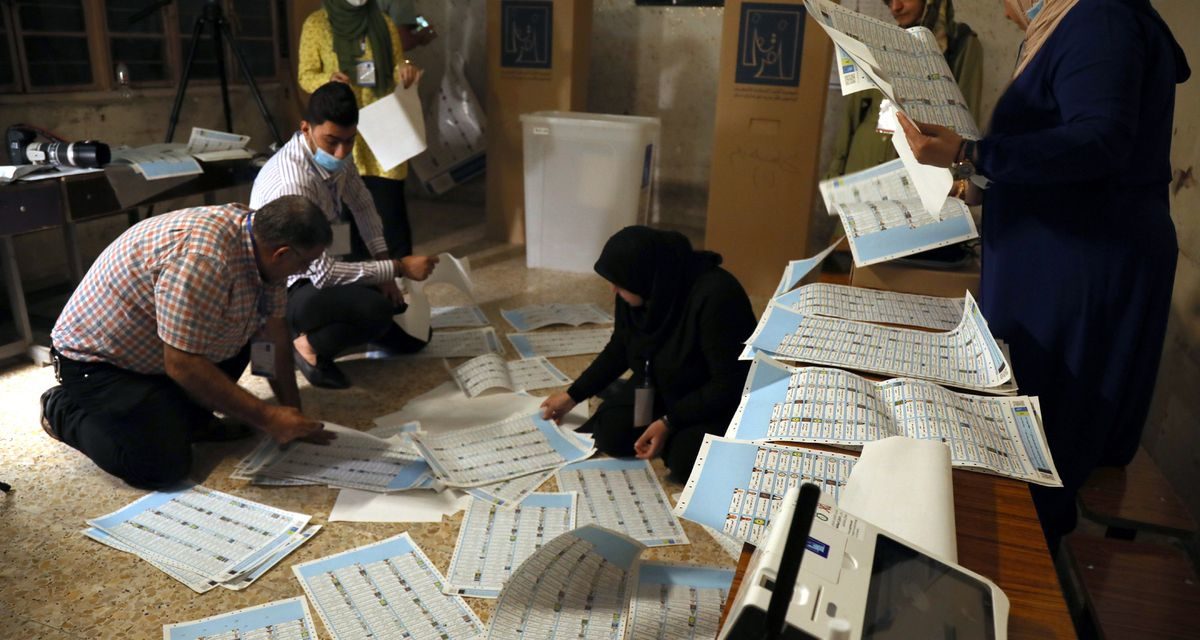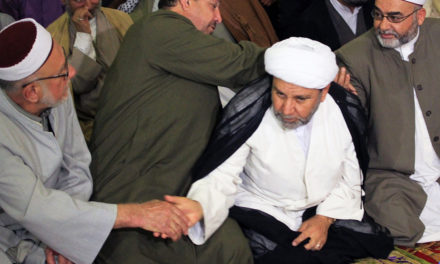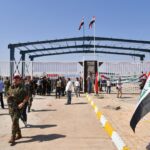(Photo: EPA)
Three weeks since Iraq’s electoral commission (IHEC) announced the final results of the October 10 elections, the Federal Supreme Court, which is constitutionally mandated to ratify the results, has so far held off on issuing its verdict. Until it does, the formal government formation process cannot commence. Reports suggest that on December 22, the court will deliberate on an appeal lodged by some parties led by the Fatah Alliance related to allegations of electoral irregularities. Whatever course of action the court adopts, the best way to address concerns about the validity of the results would be for IHEC to undertake a full manual recount.
A series of unforced errors by IHEC on election day and during the weeks that ensued gave pretext to unsubstantiated allegations of wholesale vote rigging. There were widespread accounts of voters unable to cast their ballots because of malfunctioning devices, which largely turned out to be caused by human error. Then there were instances where voter ID cards were deemed invalid, including for at least three cabinet ministers, before it transpired that IHEC had failed to inform them to collect their updated cards. Worst of all was the manner in which IHEC communicated the release of the election results during the weeks that followed. From conflicting statements about what percentage of the votes had been counted as part of the preliminary results, to misleading claims about whether manual recounts actually matched the results of the electronic count, IHEC only has itself to blame for much of the confusion and distrust.
Groups including Fatah, which saw its seat share in parliament vastly diminish, have made outlandish claims to explain their losses, including suggesting that the servers housing the voting data had been hacked by a foreign entity. In an article published shortly after the elections, I illustrated how Fatah and other pro-Hashd slates had severely undermined their electoral chances by fielding competing candidates in the same districts. Putting aside allegations that cannot be substantiated, there are a sufficient number of reasonable concerns that cast doubt on whether the final vote tally is an accurate reflection of the will of the electorate.
The fact that the UN Security Council was so quick to declare the conduct of the elections as “technically sound” before even waiting for the outcome of the appeals process says more about the underlying political imperative to rubber stamp the results than an objective appraisal of these irregularities. Much as we would like to imagine the international community as a dispassionate, neutral observer, there is no denying that the electoral losses of the Iran-aligned parties were viewed as a huge boon across Western capitals. Had the results turned out differently, perhaps UNAMI might have been more inclined to take a closer look before passing judgement on the conduct of the elections.
One major anomaly that has received little attention is the unusually high rate of rejected ballots. According to IHEC’s own publicly available data, an astounding 722,642 ballots were declared void, which is equivalent to 7.5% of the 9.6 million votes cast. To put this figure into perspective, the proportion of rejected ballots in the UK general election of 2019 was under 0.3%. And in last year’s US presidential election, that figure was 0.8%. Something appears to be amiss, but these suspicions cannot be validated without a closer look at the data.
To make matters more complicated, there are large variations in the proportion of rejected ballots between provinces, and even among voting stations in the same polling centres. This would appear to rule out a systemwide technical malfunction whereby, for instance, the electronic scanners that recorded the votes were faulty.
In Sulaymaniyah province, an astounding 21% of cast ballots were rejected overall, accounting for over 110,000 votes. In contrast, only 4% of ballots were void in Anbar province. In fact, all the Kurdish provinces had particularly elevated rates of rejected ballots, including in Kirkuk district 1, which is a Kurdish-dominated district. This pattern is not enough to determine systemic bias, but it is sufficient to warrant an investigation.
A granular look at the data reveals some even more perplexing results. In Wasit district 2, one of the voting stations at Abu Turab Primary School (polling centre #180201) rejected all 214 ballots cast. And yet in the remaining nine stations at the same school, the number of rejected ballots in each station did not exceed single digits. In another example, in a voting centre (#355311) in Anbar district 1, one of the voting stations recorded 259 cast votes, 164 of which were rejected.
Then there are cases where rejection rates are consistently high across the voting district. In Baghdad district 12, which represents areas including Yarmouk, Mansour and Qadisiya, a total of 19,000 ballots were declared void, equivalent to 12.5%. At one particular polling centre (#100451) in that district, the rejection rate was 28%.
There are no excuses for denying voters their right to have valid ballots counted correctly, not least in a country like Iraq where the participation rate is already very low. Moreover, we know that across the country, there were many close races where the margin of victory was only a handful of votes. This is why accepting any margin of error in the vote tallying process is problematic. In Baghdad district 12 mentioned above, Husayn Arab won the fourth seat with 4,200 votes, but there were 6 other candidates that came within 1,000 votes of him, making it all the more necessary to ascertain the validity of the 19,000 rejected ballots.
There have already been five instances where the Electoral Judicial Panel (EJP), responsible for looking into electoral appeals, has ordered manual recounts of ballot boxes that led to five candidates, who had initially lost out, to ultimately win seats. In Baghdad, former defence minister Khalid al-Obeidi initially failed to win a seat in district 6, coming just three votes behind the fourth-placed winner Abbas al-Jubouri. After the EJP ordered a recount, it emerged that there were a number of valid ballots that had been rejected by the digital scanners because voters had double stamped on their candidate of choice. These ballots were reinstated because the intention of the voters was clear on physical inspection. This increased Obeidi’s vote count and he ended up beating Jubouri for the seat by a mere three votes.
We also know that in some cases, the irregularities were so significant that the EJP deemed it necessary to declare entire voting stations null and void. This included a case in Erbil district 3 where instances of people voting more than once were detected. In total however, only 33 out of nearly 60,000 stations were rejected, accounting for some 6,000 ballots.
This tiny fraction is a reflection of the flaws in the appeals process. First, there is not enough transparency to know why some appeals were considered while others were rejected. The EJP received 1,415 appeals, and only 21 were accepted. Secondly, the process relies on aggrieved parties presenting sufficient evidence to put forward a convincing case for the EJP to review. This shifts the burden of responsibility away from the authorities to systematically investigate irregularities across the entire process.
For all its shortcomings, IHEC should be given credit for demonstrably trying to rectify some of its communication blunders. But one area where is has really fallen short relates to the results of manual recounts. The election law mandates that one voting station in each polling centre should undergo a manual recount and the results compared to the electronic count. This is supposed to act as a safeguarding measure to check for fraud. IHEC consistently claimed that it found a “100%” match between the two counts. For any ordinary person, that would be interpreted to mean an “exact” match; however, it later became apparent that what IHEC really meant was that all the results fell within a 5% margin of error that is deemed acceptable as per Article 38 of the election law. IHEC’s attempt to gloss over this detail is short-sighted and only breeds further mistrust in its conduct.
Given both the flawed appeals process and the unreasonably high margin of error, the only reasonable course of action to ascertain the accuracy of the final vote count, and to assure the electorate of the integrity of the results, would be to conduct a full manual recount. Jurists will claim that this is easier said than done because the election law lacks such a provision, but this is not the first time that Iraq’s judiciary has been called on to find a creative way to resolve the country’s intractable problems.











